Cob Repairs
As Cob Specialists we pride ourselves on our knowledge and understanding of this fantastic building material.
To achieve a successful and long-lasting repair a full understanding of the substrate and structure is required. Our initial question is, 'What has caused the damage?'.
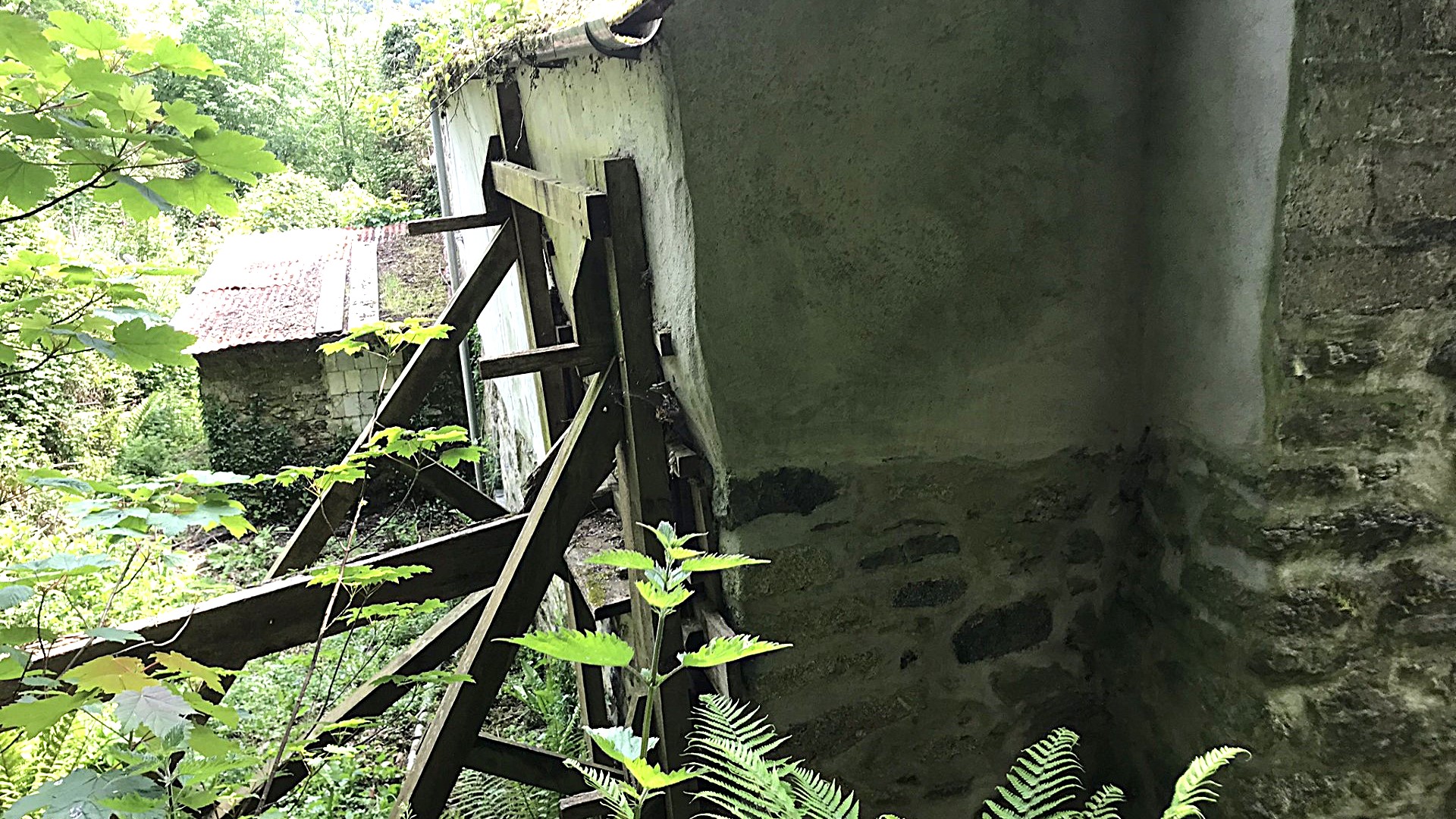

There are many reasons for varying states of disrepair – water penetration, failed cladding, failed roof timbers, bees, subsidence. These, we have found, are the most common causes.
Deep hollows and rat runs, for example, can be quite easily and quickly repaired with the use of pre-formed cob bricks and/or blocks.
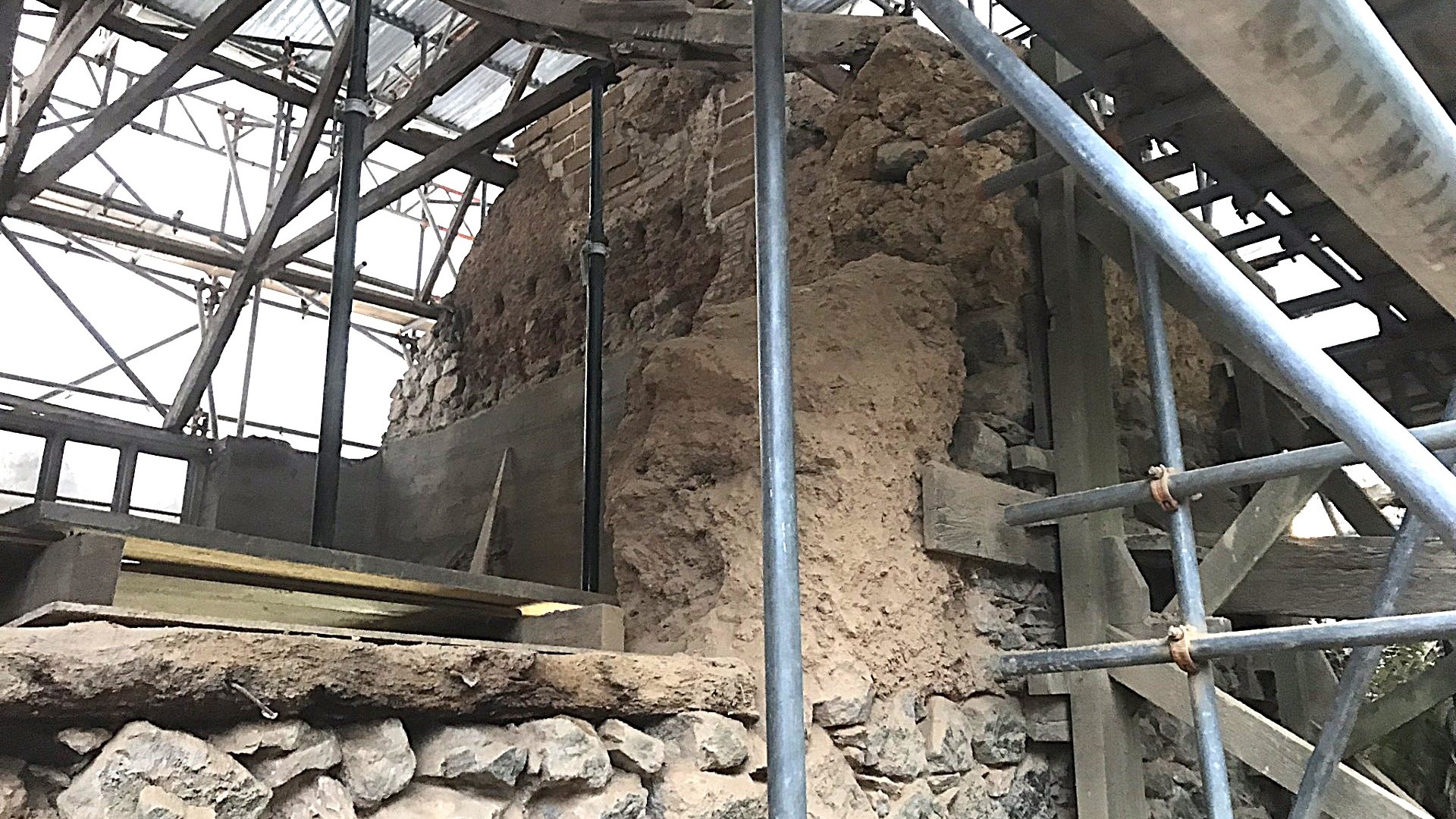
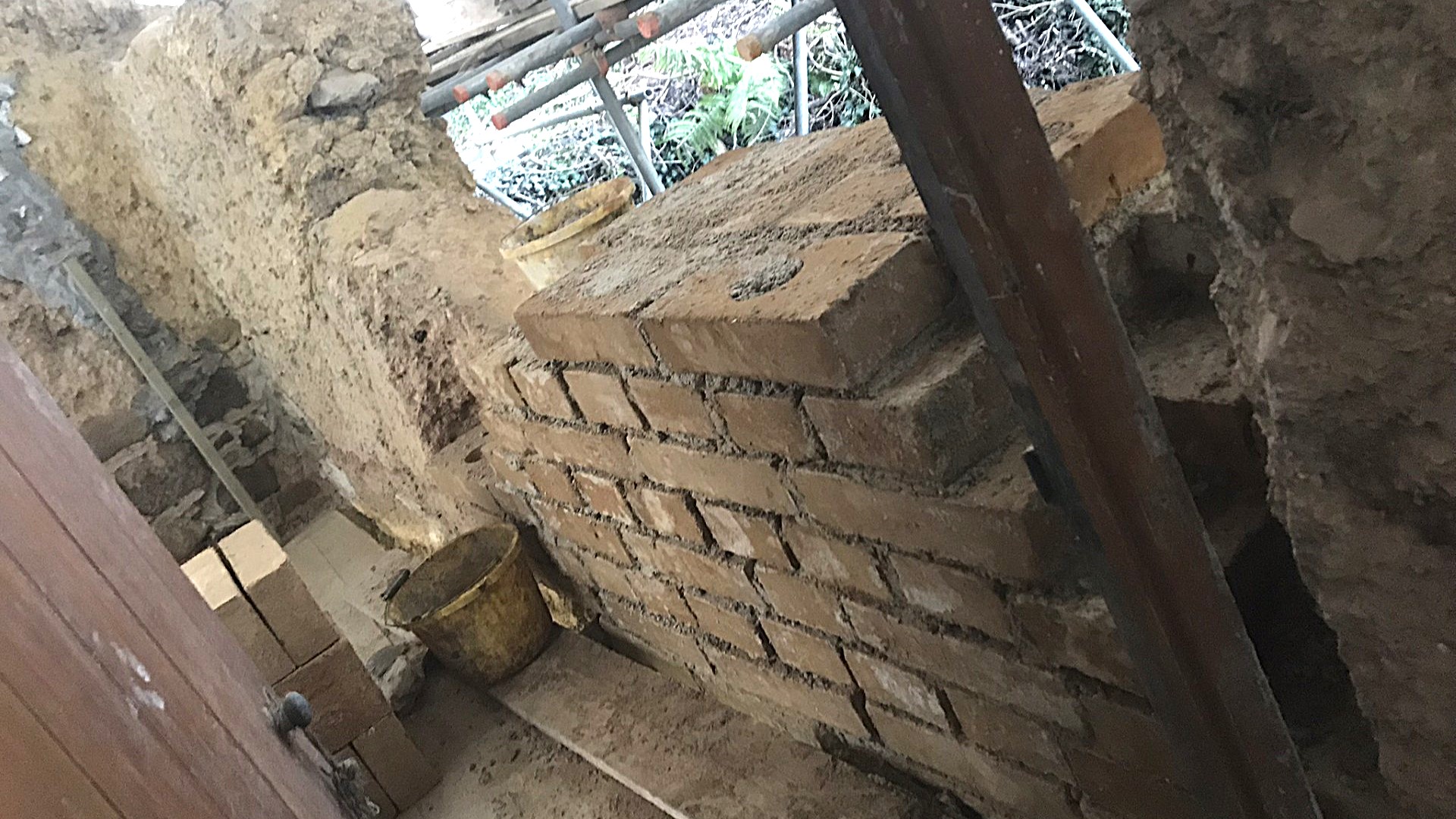
Using a Lime mortar as a binder, shrinkage is negligible. Where rat runs are numerous, it would be impractical, and could possibly compromise the stability of the wall, where these would have to be 'chased out' to accommodate so many cob bricks and/or cob blocks.
In these instances, a Lime mortar 'slurry' can be poured into the holes, plugging them with hessian while working up the wall. Once the lime has set the hessian is removed and there is scope to chase out for the cob brick or blocks on the face of the wall.
Where severe erosion has occurred, usually on the corners of cob buildings, again cob blocks can be chased into the existing cob in a stepped format.
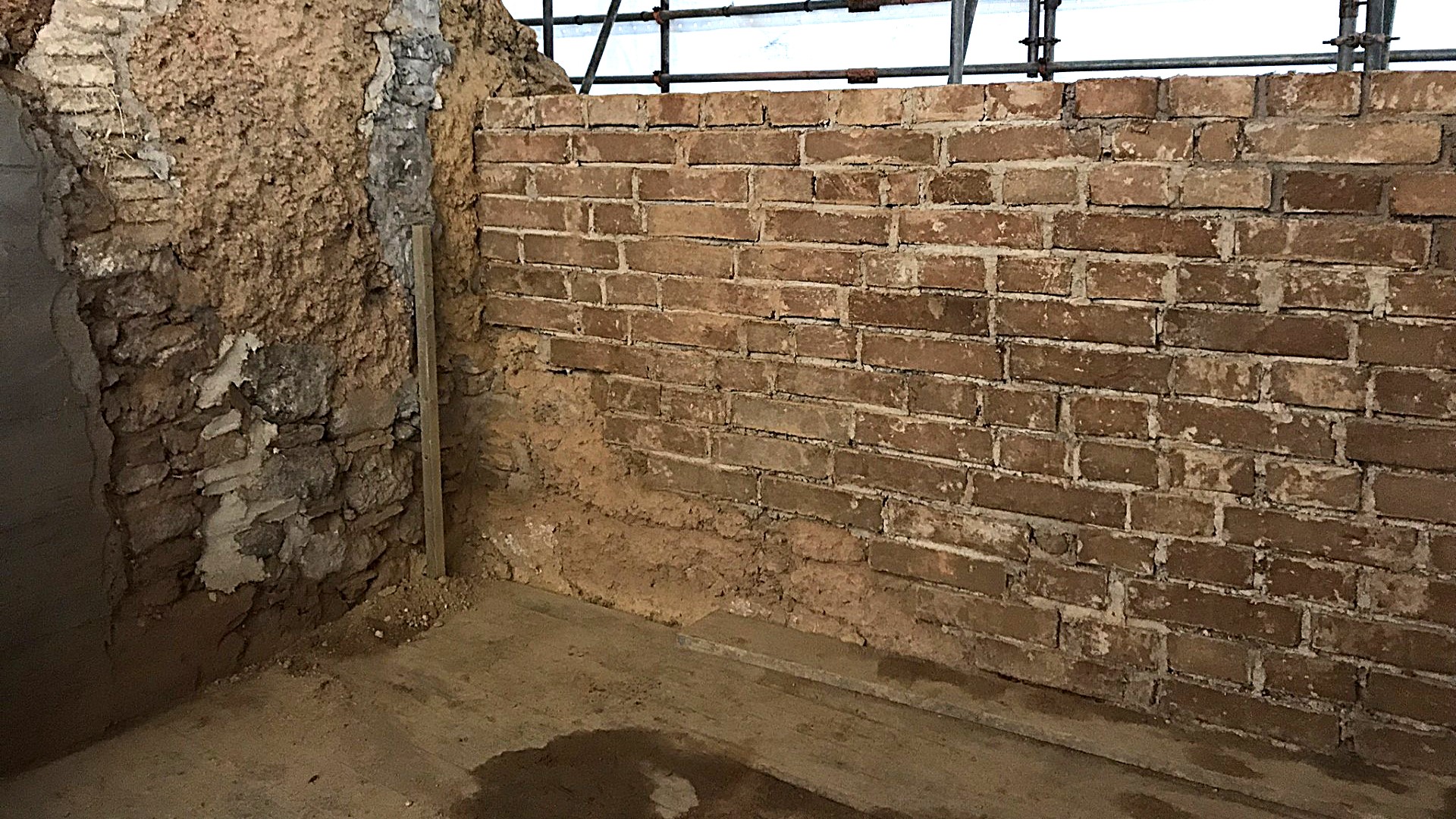
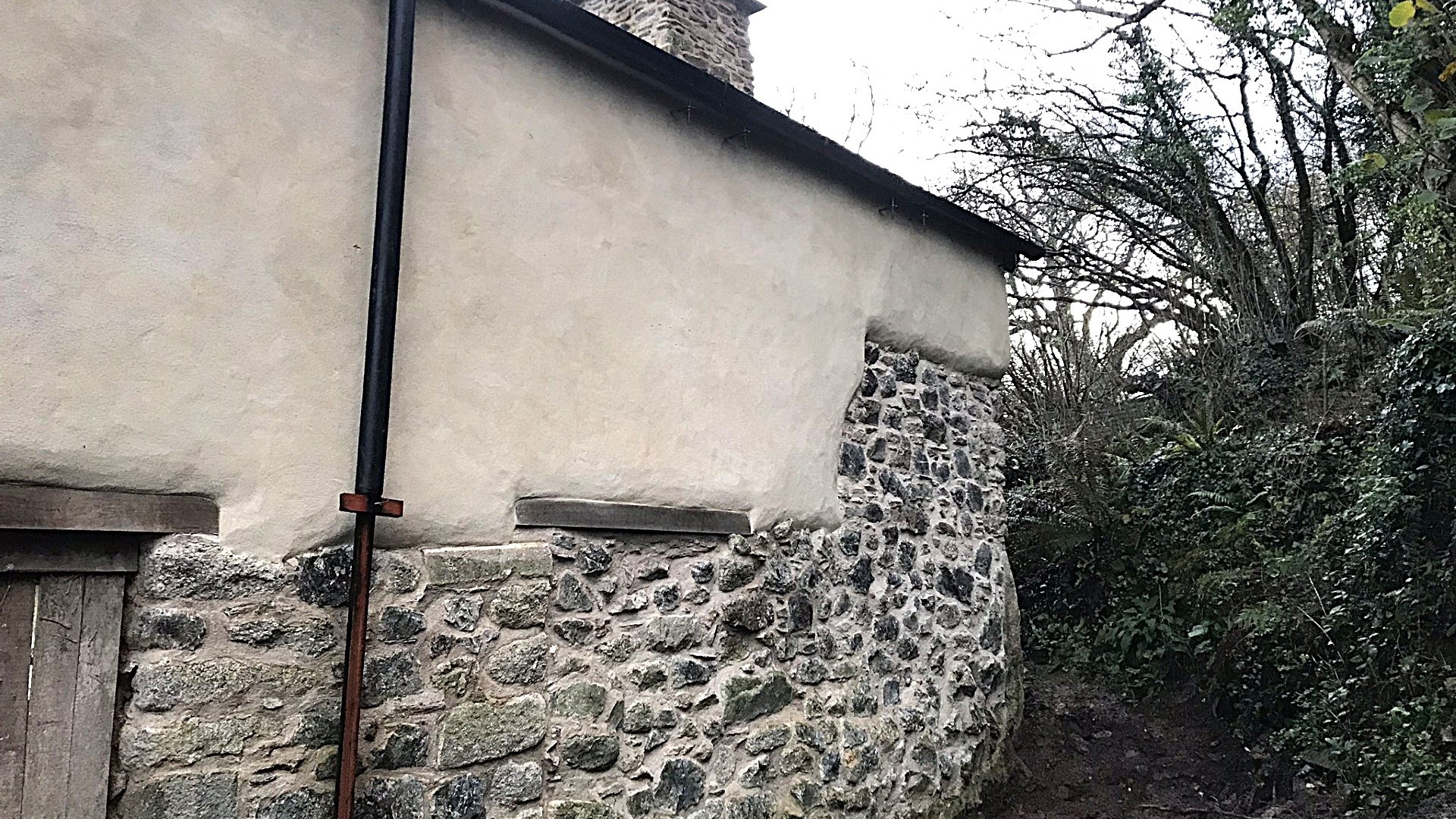
Shallow hollows both externally and internally may be left as they are. Slow undulations add character to the lime-plastered walls.
Walls leaning out due to deterioration of the stone plinth can be stabilised by a poured lime grout and/or additional stonework. 'Propping' a leaning cob wall and removing low-level stonework to underpin, for example, is not necessarily the only way – there have been too many stories, especially from Devon, of total wall collapse using such a method.
A sympathetic repair and stabilisation of the plinth are enough to secure longevity. Leave to lean! There is also the temptation to construct a concrete ring beam around the wall head. Adding such unnecessary additional weight to the stone plinth could cause it to fail.
Although the additional weight of the concrete beam is of no significance to a good cob wall – cob is immensely strong and a cob wall's load-bearing capacity is immense – it is the stone plinth that is in jeopardy. Additionally, using two non-compatible materials together will result in a cladding failure.
We are always available to discuss any Cob building projects in Cornwall, and if this is something you think we can help you with please do not hesitate to Contact Us.
Cob Repair Services Cornwall – Cob Wall Repair Cornwall – Cob Building Repairs Cornwall


